Last Updated on March 26, 2022 by Heather Hart, ACSM EP, CSCS
Have you ever heard of the term Adventure Racing, and wondered exactly what it entailed? Is it a catch all term for an endurance race that consists of more than one discipline? Or is an Adventure Race a specific sport?
For years, I wasn’t sure either. But it was only a matter of time before I found out. You see, every few years I branch out from the running scene, and venture into the multi-sport world. That’s not to say that running isn’t and won’t always be my one true love. But sometimes, an adventurous soul needs change.
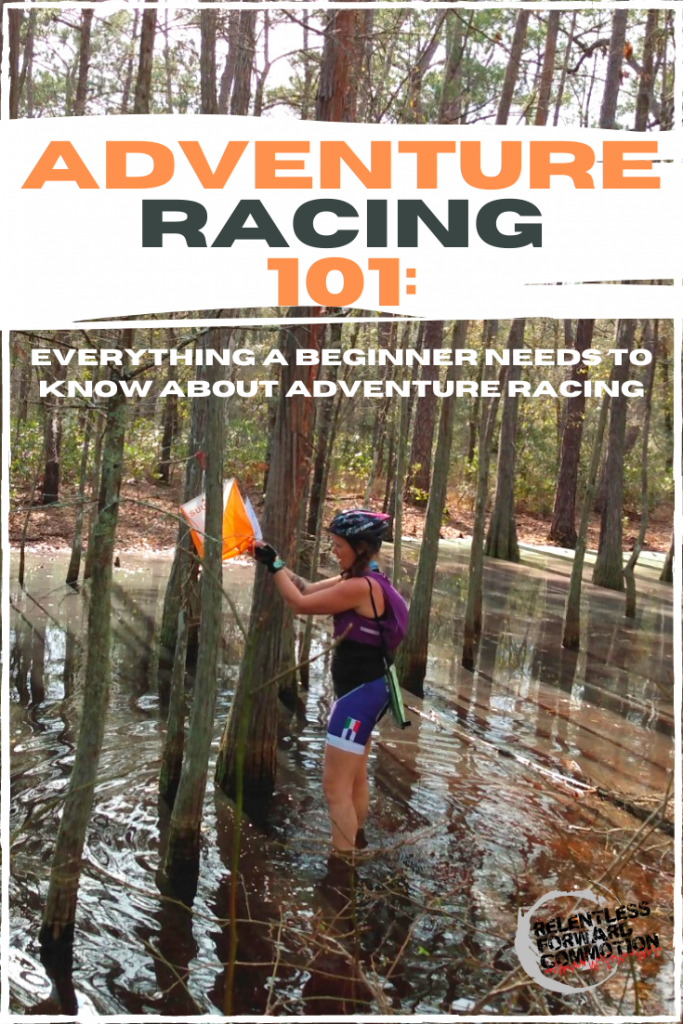
First, there was triathlon. It lasted a solid two seasons, before I realized that I simply did not enjoy road riding (motorists terrify me), and that swimming is not my forte. Back to running I went. Then, a few years later I fell in love with obstacle course racing. The combination of technical trail running with the need for full body strength to tackle a variety of obstacles appealed to me. Alas, after a few years I grew tired of the monotony of barbed wire and wooden walls, and dove back into running.
More recently, I’ve discovered Adventure Racing. Needless to say, I’m (currently) hooked. So while I’m certainly not an Adventure Race expert (not even close) I thought I’d write this post to share with friends and family who say “you’re doing what…exactly?”
What is Adventure Racing?
Adventure racing is a multi-disciplinary team sport (though occasionally, races will offer solo division) involving navigation over an unmarked wilderness course, on a hunt for pre-laid check points (CP’s).
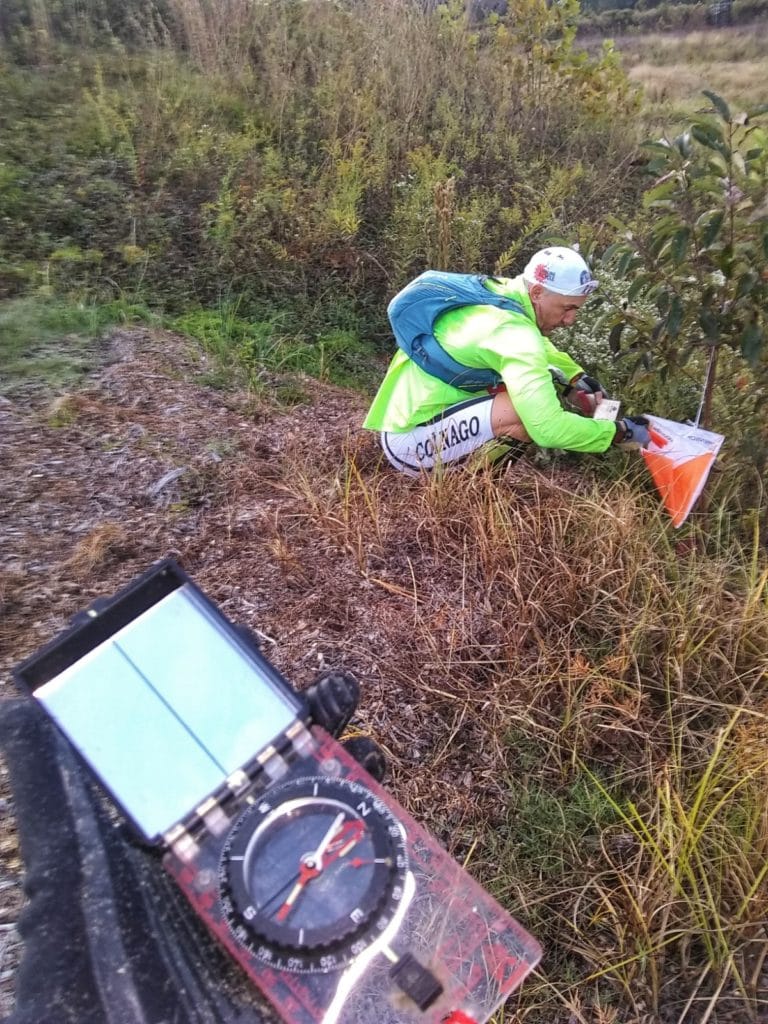
Basically, it’s like a great big scavenger hunt in nature, using a number of different sport disciplines to get you from one check point to the next.
How Does it Work?
In some adventure races, you will be given a map with pre-plotted checkpoints prior to the race start. In others, you will be given Universal Transverse Mercator (UTM) coordinates for the check points that you need to plot on a map yourself. Often, these check points are given to you the morning of the race, leaving you little time to come up with a race strategy.
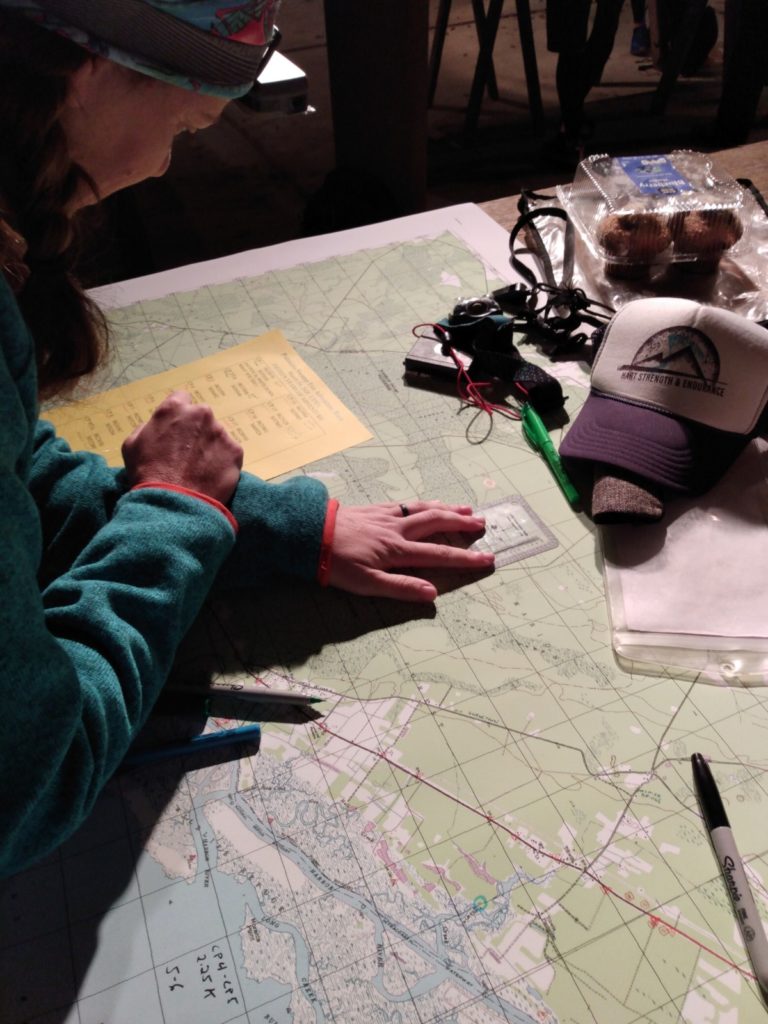
The goal of the race is to follow your map to find as many check points along the unmarked course within in the allotted amount of time given for that race. The catch, however, is that the teams (usually two to four competitors) must remain together throughout the race: you cannot split up to try and collect CP’s. Because the course is unmarked, the route teams choose to take from checkpoint to checkpoint is almost entirely up to them, which adds a massive element of strategy.
At the start of the race you’ll also be given a passport that you have to manually punch when you find check points to prove that you’ve been there, or an electronic “e-punch” that digitally checks you in at each check point. Check points are marked with a bright orange and white “O-flag”, making it somewhat easy to spot among the forest (or desert, or swamp, or…you get the idea).
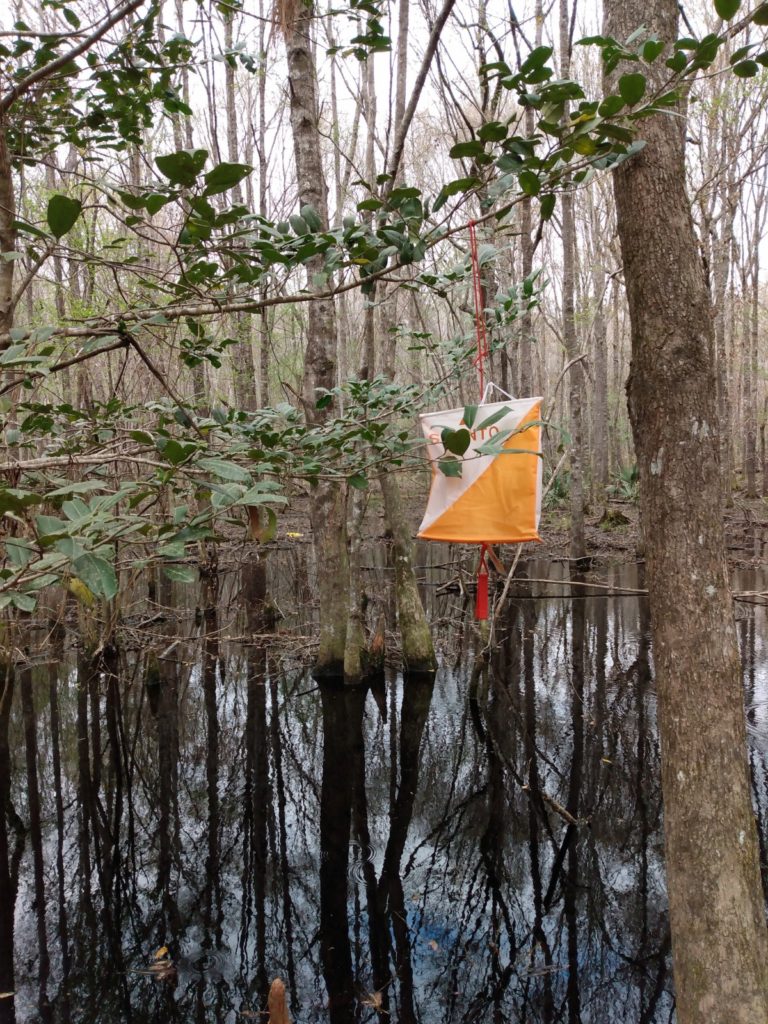
At certain points during the race, you will encounter transition areas (TA’s), where you will switch from one discipline to the next
To win an adventure race, you or your team finds the MOST amount of check points in the LEAST amount of time.
What Disciplines Make Up an Adventure Race?
Obviously the first and arguably most important discipline of an adventure race is navigation. If you (or one of your teammates) don’t know how to read and follow a map, you’re going to have a hard time in the sport of Adventure Racing. Have I mentioned that GPS is not allowed in Adventure Racing? It’s not. Map and compass only.
Navigation aside, the most common disciplines in adventure racing include:
- Trekking (running / hiking/ bushwhacking)
- Mountain Biking (and sometimes hike-a-bike)
- Paddling (usually some sort of kayak)
As you can see, this makes Adventure Racing an easy sport to cross over to from the running, cycling, or triathlon world. That said, adventure racing is absolutely not limited to those disciplines. Things like rock climbing or belaying, spelunking, white water rafting or river boarding, swimming, roller-blading, and even horseback riding may happen during an adventure race.
But wait, there’s more! Actually getting to a check point can involve all sorts of crazy feats. For example, you may ride your bike to a check point, but then have to climb across a tyrolean traverse to get to the CP on an island in the middle of a pond. Or take a zipline from one peak to another to claim your CP. Or simply climb a tree. The possibilities are endless.
And that’s part of what makes it an adventure.
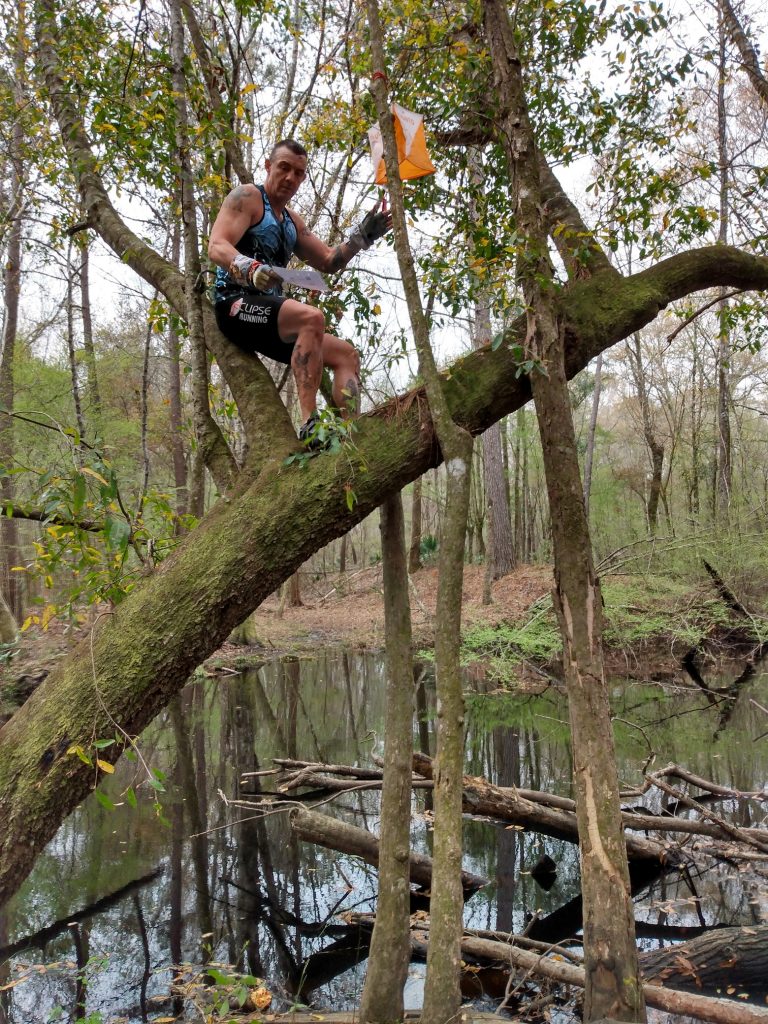
Types of Adventure Racing Courses:
Just like other popular multi-sports, Adventure Racing offers a multitude of different distance courses.
Sprint Course:
A sprint distance course is typically a two- six hour race, featuring minimal navigation, and typically only the most common disciplines. This is the perfect course to dip your toes into the world of Adventure Racing. This was my first foray into the Adventure Race world, with the 2019 Independent Republic 3 hour race.
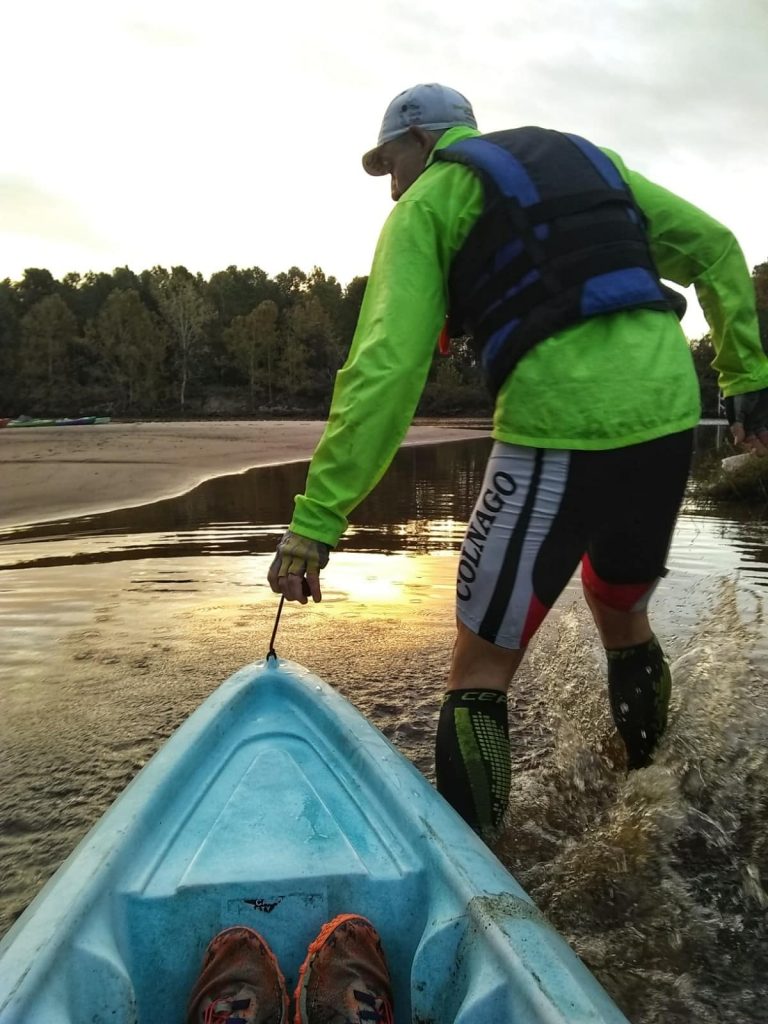
12-Hour Course:
The next step up features a six- to twelve-hour race. Obviously you’re going to cover more distance, and be required to find more checkpoints. My second Adventure Race, the Palmetto Swamp Fox Adventure Race (10 hour) fell into this category.
24-Hour Course:
A race lasting between 18-30+ hours. Kind of like in a 100 miler (hello, my ultra running friends!) sleep deprivation and the ability to race overnight become a major factor.
Multi-day Course:
Multi day courses last…you guessed it…for a “few” days. Typically a 36-48+ hour race, involving advanced navigation and route choice. Teams will typically have to determine when (and if) they will stop to rest, unless the race director has set pre-determined blackout hours. Either way, the race clock does not stop.
Expedition Course:
Three to ten (or longer) day race, involving all the challenges of a multi-day race, but often with additional disciplines (climbing, horseback riding, etc.) I’ve noticed that most expedition courses are held in very epic locations across the world. Like the Raid in France, held on Reunion Island in the Indian Ocean:
What Gear Do You Need for an Adventure Race?
Adventure Racing can absolutely be a very gear intensive sport, once you get into the longer distance courses. But for beginners? You can definitely get away with the bare minimum.
Having trekking equipment (running shoes, hydration pack – there are typically NO aid stations, so you must carry your own hydration/nutrition/etc.) and biking equipment (bike, helmet, etc.) are necessary. You’ll also need a compass, UTM plotting tool, and some sort of waterproof case to keep your map and passport dry throughout the duration of the race.
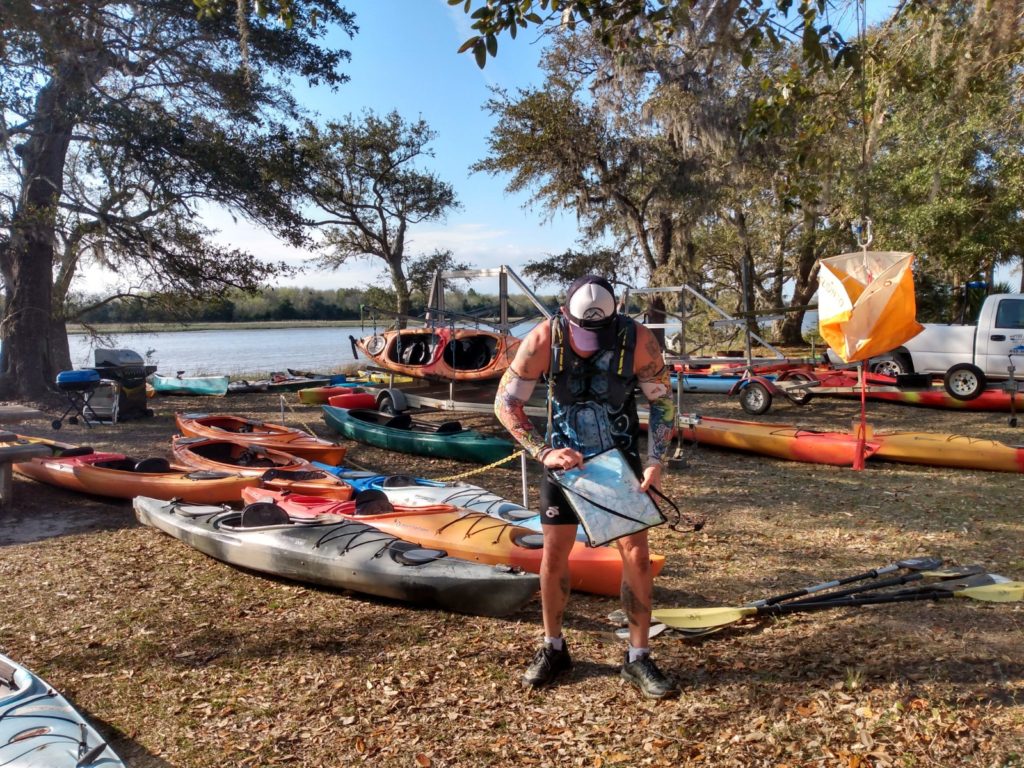
For our first two Adventure Races, we rented a tandem kayak for the paddle portion of the event. In races that require that you bring your own boat, race directors will often point you to a local boat rental service that they partner with for the race. Other races may provide the boat, and not even give you the option of providing your own.
How Do You Train for an Adventure Race?
It might be obvious that training for an adventure race should include mountain biking, running, and paddling. As an endurance athlete, I felt pretty confident in all of these areas (minus paddling, but I had hoped that my five day a week gym splits with upper body strength training would help me out).
Personally, what I had to focus on was the navigating/orienteering portion of the race. As a long time runner, I’m used to having a course clearly marked for me. Now, I have to figure out how to get to where I need to go with nothing but a map and compass.
I’ve learned how to:
- read and plot UTM coordinates
- read a bearing on a compass
- adjust for declination (and what declination means in the first place)
- recognize what all of those squiggly lines and symbols on a topographic map are.
And once you’re comfortable with those, you have to learn how to do them on the fly, in the field.
The other thing I’ve been learning is basic bike maintenance. During our last race, Geoff’s bike broke no short of 28 times (seriously, I was counting). Unlike triathlon, there is no sag / mechanics out there to help you. You’re on your own, so it’s helpful to know how to fix an issue when it arises.
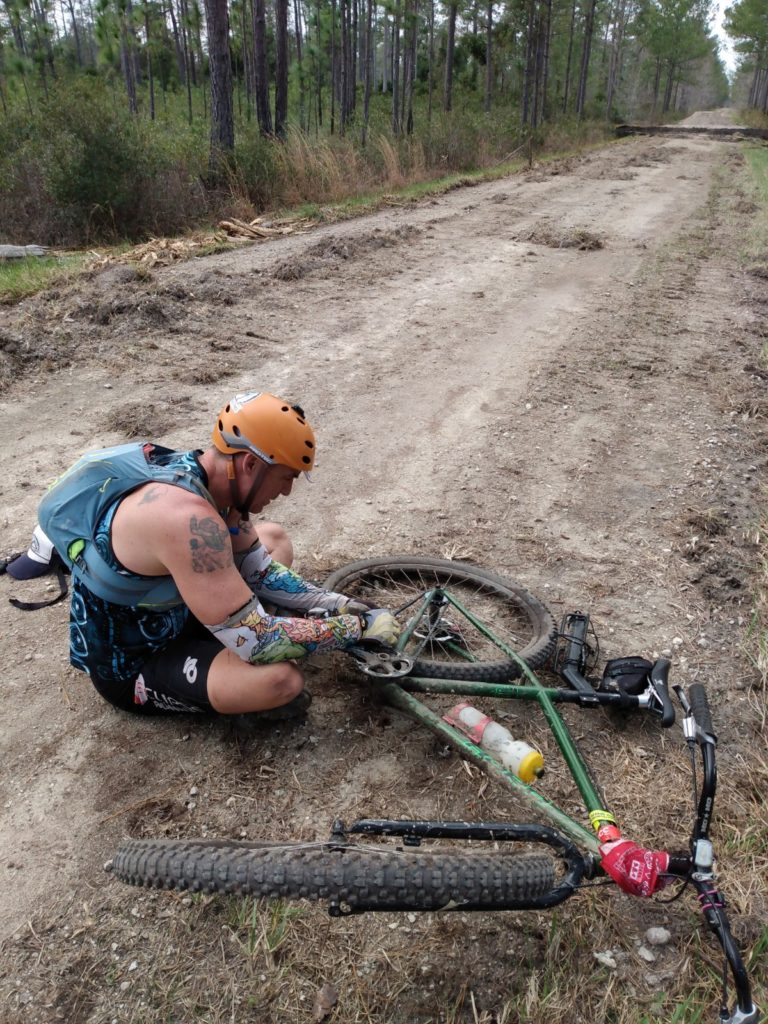
What I Love About Adventure Racing:
After well over a decade of endurance racing, the most appealing part of adventure racing, for me, is the strategy involved. You see, in running, and even obstacle course racing or triathlon, what matters most is your endurance and strength. How well have you physically trained to reach that finish line? Sure, there was some strategy involved – namely, knowing when to conserve energy and when to push. Or, keeping your race nutrition in check. But getting from the start line to the finish line was pretty mindless.
With adventure racing, you have to really think about what comes next. How are you going to find the next check point? What sort of things are you going to look for? Which order makes most sense? Which check points simply aren’t worth going for, if you’re running out of time? Being the fastest or the strongest doesn’t necessarily mean you’re going to win.
And of course, you get to do all of this while still exerting yourself physically over many, many miles, and getting dirty and muddy.
Two of my most favorite things.
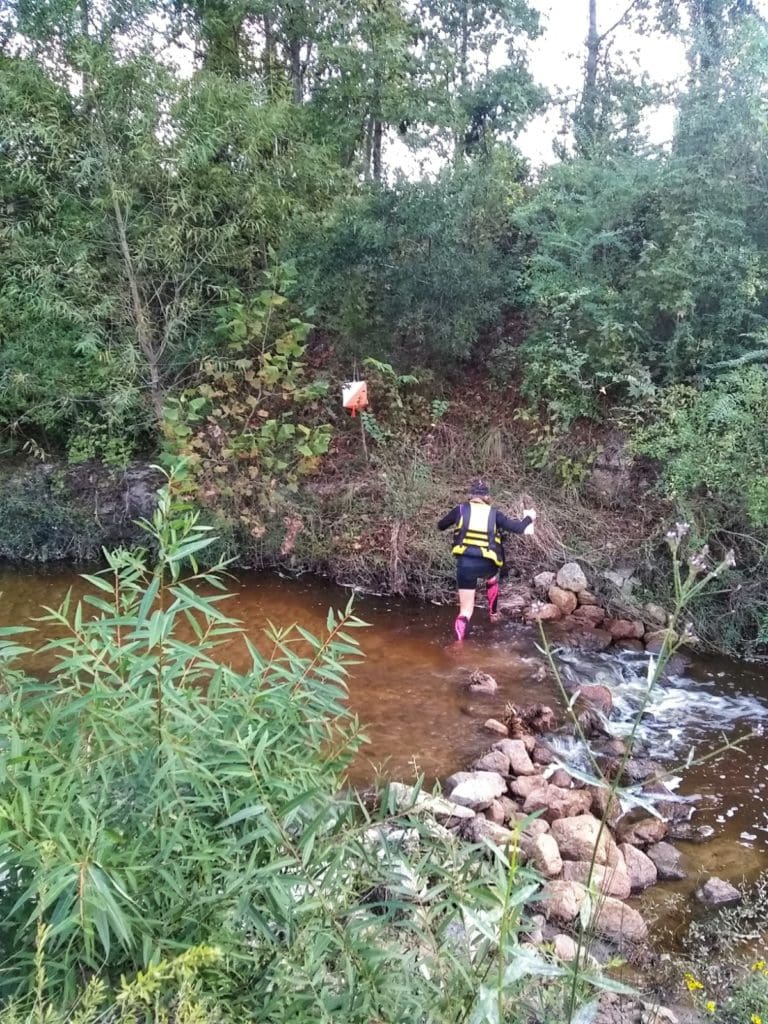
Plus, there’s the team aspect. For an official placing / official finish, your team has to finish together.
So, there you have it. As my knowledge in the Adventure Racing world grows, I hope to continue to update this post. I am still such a “newbie”, but I’m absolutely loving this new and exciting endurance challenge. If you’re looking for something “different” to add to your endurance racing resume, I highly recommend giving Adventure Racing a try!
Want more Adventure Racing Content? Head over to our adventure racing specific site, Hart Adventure Racing, for training and racing tips, gear reviews, race reports, and more!
Heather Hart is an ACSM certified Exercise Physiologist, NSCA Certified Strength and Conditioning Specialist (CSCS), UESCA certified Ultrarunning Coach, RRCA certified Running Coach, co-founder of Hart Strength and Endurance Coaching, and creator of this site, Relentless Forward Commotion. She is a mom of two teen boys, and has been running and racing distances of 5K to 100+ miles for over a decade. Heather has been writing and encouraging others to find a love for fitness and movement since 2009.
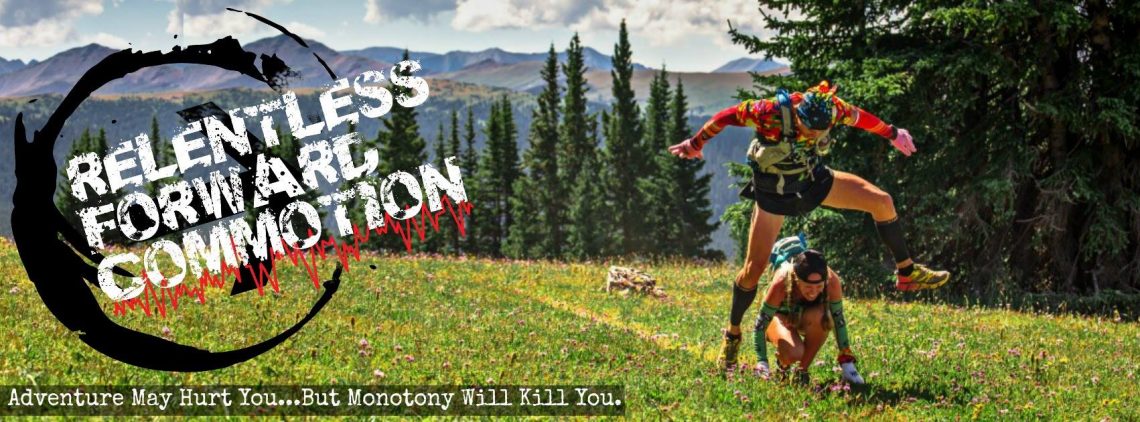
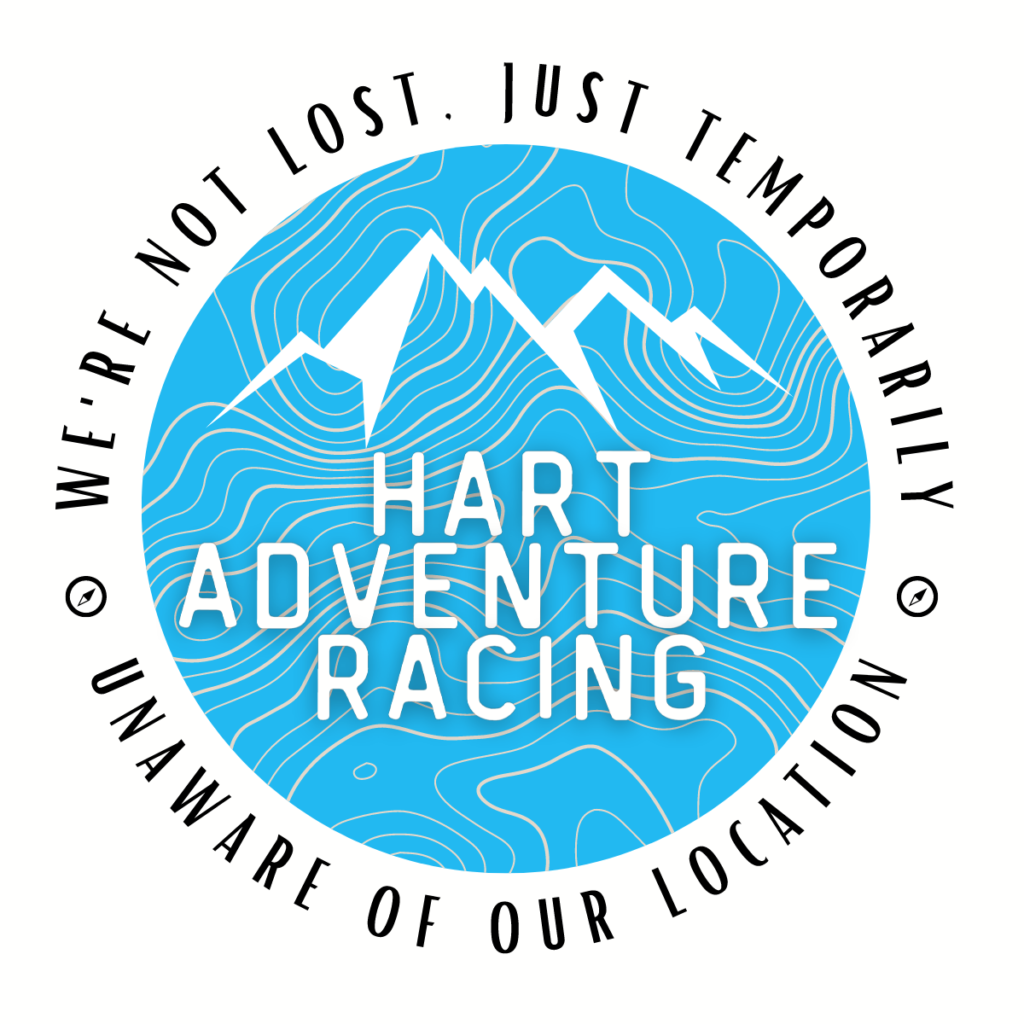
Nick
🙂 I love how a sprint is two 6-hour races!
You say the most common disciplines are biking, trekking, and paddling. Does this mean that different races deviate from these disciplines? What’s the hardest discipline you’d had to do?
Heather Hart, ACSM EP-C
Great questions Nick! So, I suppose I should edit that, as I’m not sure I’ve heard of an AR that * didn’t * include biking, trekking, and paddling! But, other disciplines are often added in addition to that. I haven’t done many races yet, so I don’t have any crazy stories to tell. That said, I watched a race recap for an expedition race where at the start, they were all given horses. Personally, I have ZERO horseback riding experience, so that would definitely throw a wrench in my race day strategy, haha!
Tim
This is a great article, thank you for posting it. My step-son and I are both prior service and thought we were in pretty good shape until this past Thursday, when we attempted our first adventure race. LOL. Well, even though we didn’t get through the whole thing, we learned a lot and had a great time. This sport is definitely a great way to experience the world away from the television and get to know your friends and family much better. 🙂 I’m hooked.
Kim G
This is awesome! I’ve never heard of Adventure Racing and it sounds really cool, and fun too. I love that it has a team element to it, kind of like Ragnar races.
Chelsea
WOW! This is such a great and interesting read. I’ve never done an adventure race myself but I’m obsessed with watching documentaries about them on YouTube. Those and ultras are super impressive to me even though I don’t know if I’ll ever work up the courage to do one. haha!
Heather Hart, ACSM EP-C
My husband and I do the SAME THING – we’ve got a constant queue of AR & Ultra documentaries on Youtube!! Ultras are so much fun, the community is incredible! I highly, highly recommend both!
Jenn
That sounds… adventurous!
Wow! I bet that’s incredibly exciting, challenging and rewarding. I’d love to do something like that one day!
Deborah Brooks
This sounds kind of like one step up from a Ragnar. Looks like a lot of fun! I would try it sometime (maybe!)